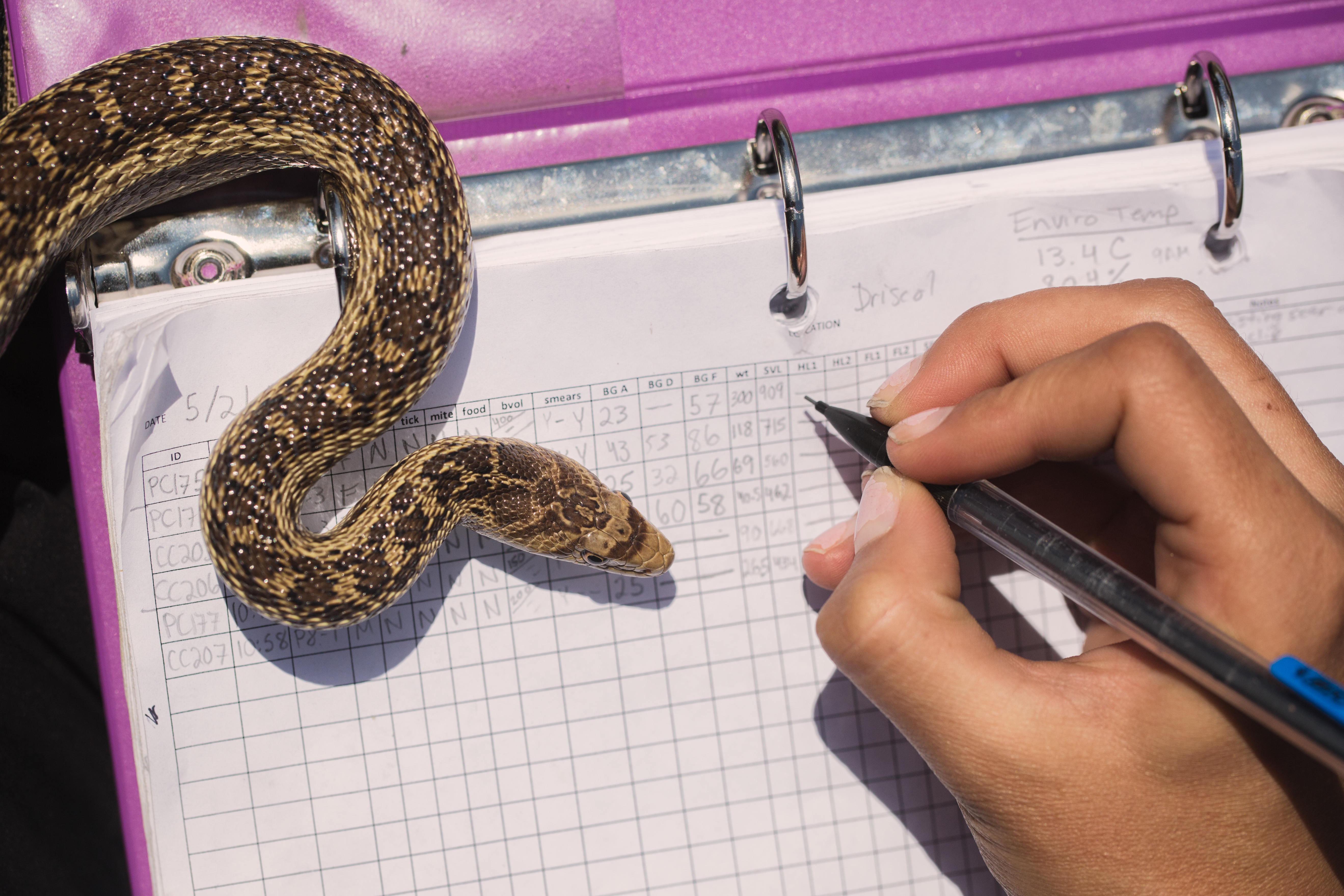Magazine Spring 2024 Large Grant Funds Study of Reptile Dwarfism
Westmont biologist AMANDA SPARKMAN ’03 and her research collaborators have won a $2 million, four-year grant from the National Science Foundation (NSF) to continue investigating the evolution of dwarfism in Channel Islands reptiles.
The Dwarf Reptile Project (smalproject.org) focuses on five species: the gopher snake, western yellow- bellied racer, southern alligator lizard, western fence lizard and side-blotched lizard. Three are dwarf, two are not.
Dwarfism and gigantism have evolved on islands throughout the world, yet no clear consensus explains why some species grow larger and others get smaller than those living on the mainland.
Dwarfism is often thought to result from more limited food on islands, leading to smaller body sizes as the reptiles adapt. “When species colonize an island, the reduced availability of prey might favor those with smaller body sizes that can become more efficient at operating within the limitations,” Sparkman says.
An initial study by Sparkman and her colleagues, comparing island species with their mainland counterparts from Santa Barbara to San Mateo County, documented the dwarfism in island reptiles and revealed differences in blood glucose levels that would support the hypothesis of limited resources. Current work will explore the molecular and physiological basis for the convergent evolution of dwarfism as well as how dwarfism might affect other traits, such as reproduction, growth rate and survival.
“Through this work, we hope to provide data and insight into these reptile populations that will tell a fascinating story of adaptation on multiple levels of biological organization and aid in the conservation and management of island reptiles.” Her interest in conserving these unique species has inspired her to take a lead role in forming a Channel Islands Herpetofauna Working Group in collaboration with fellow researchers, the National Park Service, the Nature Conservancy, and other island land managers and stakeholders — a much needed initiative as little is known regarding the well-being of these island populations.
The NSF’s Division of Integrative Organismal Systems awarded Sparkman, Westmont professor of biology and environmental studies minor co-adviser, more than $680,000. Collaborators Tonia Schwartz and Melody Russell (Auburn University) and David Miller (Penn State University) received the remainder of the funds.
The grant will cover laboratory work and travel expenses and pay for student researchers and a research technician. “Westmont students will continue to gain experience in finding, capturing, handling, processing and performing ultrasounds on reptiles, as well as analyzing data and presenting our work,” Sparkman says.
Westmont student-researchers will work and interact with graduate and post-doctoral students from Auburn and Penn State.
“We hope to provide data and insight into these reptile populations that will tell a fascinating story of adaptation.”
An expert in evolutionary ecology who has been studying reptiles for about two decades, Sparkman joined the Westmont faculty in 2012. Her post-doctorate work at Trent University focused on the breeding and reproduction of the red wolf, declared extinct in the wild in 1980.
She infuses a love of field research in her students, who also investigate western fence lizards and acorn woodpeckers along with snakes. “I’m interested in how physiology, behavior and life history interact to produce viable strategies in changing environments,” Sparkman says. “My students and I are endlessly curious about how the world works, and along the way, have developed a deep affection for the animals that we study.”
